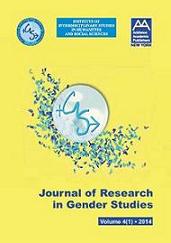Metaphorical Gender Stereotypes in Written Medical Discourse
Metaphorical Gender Stereotypes in Written Medical Discourse
Author(s): Mariana DragusinSubject(s): Gender Studies
Published by: Addleton Academic Publishers
Keywords: metaphor; cognitive semantics; WAR metaphor; masculinization; gender
Summary/Abstract: The interest in metaphor has indicated a new progress since linguistics and the philosophy of language placed it in a new light. The numerous studies in the 20th century profoundly changed the understanding of metaphor. Authors like Roman Jakobson, I. A. Richards, Max Black, Paul Ricoeur, George Lakoff and Mark Johnson etc. have made a huge contribution to the development of a new view on metaphor. Thus, the contemporary philosophy of science has induced a clearer semantic delineation, which led to the emergence of a problematics of metaphor. The attention given to the cognitive side of metaphor in the scientific development context can be considered one of the most important traits of modern metaphorology My research interest in medical scientific discourse has led me to the conclusion that there is a number of dominant metaphors pervasive in this kind of scientific discourse, the WAR metaphor being one of them. The present article formulates the hypothesis that written medical discourse is characterized by coherent metaphor clusters centring on WAR metaphor, which masculinizes this discourse. My assumption that the WAR metaphor functions as a masculinization device is supported by Suzanne Fleischmann (“Language and Medicine” in Schiffrin, Tannen and Hamilton, The Handbook of Discourse Analysis, 2001), who states that “to the extent that war is still a largely male enterprise, [the WAR] metaphor subtly reinforces [the social domain’s] traditional gender bias.” In view of the fact that war can be considered a quintessentially masculine activity and a fundamental test of manhood, its metaphoric usage comes to marginalize, if not eliminate, metaphoric womanliness and, as a possible outcome, literal women in the sphere the metaphor is embedded in.
Journal: Journal of Research in Gender Studies
- Issue Year: 4/2014
- Issue No: 1
- Page Range: 1224-1235
- Page Count: 12
- Language: English
- Content File-PDF

